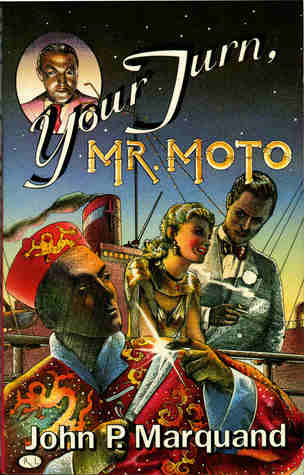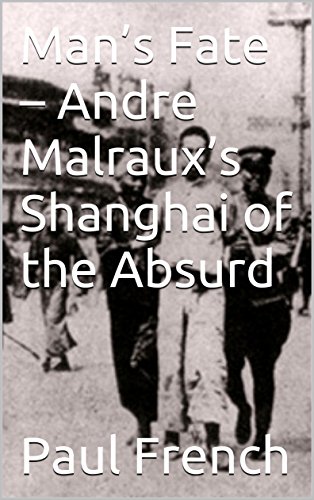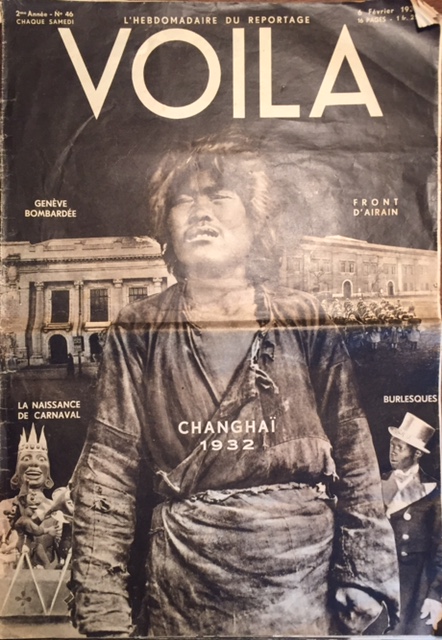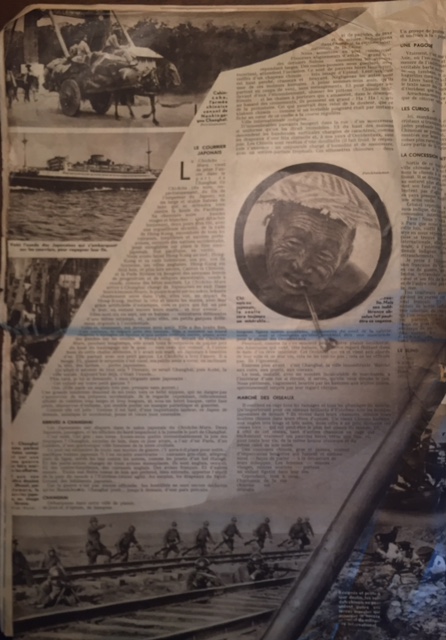Posted: September 28th, 2016 | No Comments »
On the 26th September 2016 the following 138 word article appeared in the English language edition of the Chinese Global Times newspaper. One assumes the editors intended the story to be positive. However, the story, below in full, essentially tells you just about everything that’s wrong with heritage in Shanghai, and why no building (of any era, style, architect or usage) is safe in the city.
To talk of protection lists being updated only in 2040 is absurd – that is 24 years away. Even the most keen defender of Shanghai’s corrupt Communist Party bosses and their mega-dodgy property developer pals has to admit that the level of destruction and irreplaceable heritage ruination in the last 24 years, i.e. since 1992, in the city is a catastrophe (and that’s without considering the horrendous relocations, beatings, intimidation etc of local people). What on earth can the next 24 years bring? The simple answer is obviously that perhaps, a quarter of a century from now, nothing will be left of any note (and I include the Bund in that).
It should also be mentioned that of course Shanghai has not preserved 3,000 historical villas – a number approximate to that may stand but very few, only a handful, have not had their interiors ripped out completely (either by conversion to multiple occupancy dwellings in the post-1949 period or later in various ways from wine bar-isation to bad restorations/modernisations. They are facades for the most part.
I am sure I do not need to point out the ridiculousness of calculating cultural capital and heritage in base numbers terms – so many theatres, museums and art galleries, as if they were traffic lights. Nonsense like that leads to the idiocy of giant table tennis museums and state art galleries devoted to socialist realist art! Who else even counts how many “grand concert halls” they have – worthless, if you censor the music and performances within of course.
Shanghai continues to bulldoze heritage, the Party sanctions it, their property developer friends profit from it…2040 is way too late!!
Shanghai protects more historical buildings
Source:Global Times Published: 2016/9/26 18:08:39
Shanghai will establish a system to regularly include outstanding historical buildings into its protection list by 2040, according to Zheng Shiling, an academician of Chinese Academy of Sciences.
In her recent seminar, Zheng pointed out that the protection list is not updated timely enough and many historical architecture tends to disappear before being noticed by the authority.
But Zheng pointed out that Shanghai has preserved 3,000 historical villas. “Though Shanghai is known for its skyscrapers and modern buildings, it also possesses many cultural heritage sites.”
Shanghai lags behind other developed metropolises like London, New York, Tokyo and Paris in terms of cultural facilities.
“London has 43 universities, 303 national museums, 241 theaters, 10 grand concert halls and 875 artistic galleries, while Shanghai has only 124 museums, 115 theaters and grand concert halls and 208 art galleries,” Zheng added.
Posted: September 27th, 2016 | No Comments »
Marie Tempest was perhaps the best loved English soprano singing late Victorian and Edwardian musical comedies. She has a long career, starting in 1885. She was soon appearing in both London and New York. In the 1890s she appeared in several Chinoiserie productions on the London stage – The Geisha in 1896 and then San Toy in 1899 (and the film version in 1900). She appeared in the early 1900s in several Somerset Maugham plays and the two became great friends. In 1914 she undertook a world tour visiting America, Canada, Australia, New Zealand, South Africa, India, Singapore, Japan and the Philippine as well as, of course, Shanghai. She spent the war years in America. She then passed through Shanghai once more (as well as appearing in Peking, Tientsin and Hong Kong), in 1919, while travelling round the world and eventually got back to England in 1922. Her 1919 engagement in Shanghai lasted an amazing four weeks due to public demand. She appeared at the Lyceum Theatre and charged upwards of C$4-5 a ticket – an unheard of high amount for the time. In 1922 she played the Peking Pavilion with similarly high ticket prices.
By the time she appeared in Shanghai she was in her 50s, but still a major star. Marie Tempest died in 1942, shortly after her home, and lost of the mementos and souvenirs of her long career, was destroyed in the Blitz.

Marie Tempest in The Geisha in the 1890s


And around the time she visited Shanghai
Posted: September 26th, 2016 | No Comments »
If you are in New York this late September or October then here is what you must do!!
Qing Dynasty Peking: Thomas Child’s Photographs
September 23 – October 25, 2016
Rare early photographs of Peking (Beijing) by Thomas Child, from the Stephan Loewentheil Historical Photography of China Collection, will be exhibited for the first time in New York at the Mishkin Gallery at Baruch College.
Qing Dynasty Peking: Thomas Child’s Photographs, curated by Stacey Lambrow, features a selection of over 40 original nineteenth-century albumen silver prints. These views of Peking (Beijing), made in the 1870s and 1880s, are from the earliest comprehensive photographic survey of the ancient city. During his nearly two decades as a resident of Peking, Child produced the most extensive photographic documentation of the city and its environs. The images depict the architecture, monuments, people, and culture of Peking (Beijing) during the early years of photography in late imperial China. Child’s photographs offer a unique glimpse into the country’s rich cultural past.
Among the highlights of the show is a photograph of a Bride and Bridegroom (1870s) in traditional Chinese dress. It is one in a series of three images Child took pertaining to late Qing dynasty wedding customs. The woman in this photograph is the daughter of Zeng Goufan, a high-ranking official of the Han dynasty. Descendants of Zeng Goufan will attend the opening reception of the exhibition to see the photograph of their ancestor’s wedding for the first time.
The photographs included in the exhibition are often the only records of buildings and sites that were later altered or destroyed. Due to historical factors, a scarcity of scholarship, and the fact that very few of Child’s photographs have survived, there has never been an exhibition in New York devoted to the photographer’s work. Child was also a pioneering documentarian, producing printed labels with descriptive text to accompany his photographs. It is evident from his photographs and their labels that he took great care to understand the long history and culture of the Chinese people. Child learned to speak Chinese, and he spent time among Chinese residents while he was in Peking, sharing with them his knowledge of the art of photography.
About the Stephan Loewentheil Historical Photography of China Collection
The Stephan Loewentheil Historical Photography of China Collection, based in New York, is the largest holding of historical photographs of China in private hands.
Opening Reception:
Thursday, September 22, from 6 – 8 p.m.
The Sidney Mishkin Gallery is located at:
Baruch College
135 East 22nd Street at Lexington
New York City
Gallery hours are:
Monday – Friday, 12 noon – 5 p.m.
Thursdays, 12 noon – 7 p.m.
Saturdays 12 noon – 6 p.m.
All exhibitions at the gallery are free and open to the public.
Posted: September 25th, 2016 | No Comments »
I blogged about John P. Marquand’s 1935 novel Ming Yellow a while back (here). Though nobody much reads them nowadays and their reputation has been unfairly tarnished by the rather daft yellowface films with Peter Lorre, Marquand’s series of Mr. Moto books are actually very good and insightful reads on the situation between America and Japan and the state of China in the late 1930s. You dismiss them as simple pulp or as racist at your peril! Here is Marquand on Shanghai in 1935’s Your Turn, Mr. Moto, the first book in the series (of six)….
“I doubt if any city in the world is more amazing than Shanghai, where the culture of the East and West has met to turn curiously into something different than East and West; where the silver and riches of China are hoarded for safety; where opera-bouffe Oriental millionaires drive their limousines along the Bund; where the interests of Europe meet the Orient and clash in a sparkle of uniforms and jewels, where the practical realities of western industrialism meet the fatality of the East…Believe me, I repeat, anything can happen in Shanghai, from a sordid European intrigue to a meeting with a prince.”

Posted: September 24th, 2016 | No Comments »
While this period is a bit modern for me anyone who spent anytime in China between 1978 and 1990 will know the crucial role hotels played in life – food, bars, temporary homes, a book or magazine once in while, foreign newspapers occasionally, meeting spots. So Accommodating Reform: International Hotels and Architecture in China, 1978-1990 should be interesting. Anyway, more details here of the exhibition at the Ullens Centre for Contemporary Art in Beijing and a slideshow to tempt….
Looking back at China’s early modern hotels also show me two things – a) of course just how much cities like Shanghai and Beijing have developed (below is the Portman shortly after completion in the early 1990s) and b) just how ugly and badly designed they could be (below is the Portman shortly after completion in the early 1990s)…

Posted: September 23rd, 2016 | No Comments »
A few older pieces of mine that, I think, have some merit and may be useful to those researching China fell out of copyright recently. So I’ve repackaged them for Kindle in the hope of making a few pennies to contribute towards continued research costs. I live from writing so a small charge seems justified I think. Anyway, Andre Malraux’s Man’s Fate (La Condition Humaine) remains the greatest novel of Shanghai and in need of constant re-reading and consideration – so here’s my tuppence ha’penny worth…on Amazon UK and Amazon US for less than a quid or a buck….

Posted: September 22nd, 2016 | No Comments »
What would a China Rhyming French Week be without a former Frenchtown boîte? A disgrace, of course. So here’s the Black Cat, a “charming” little bar on the Avenue Roi Albert (now rather less romantically Shaanxi Road South). Of course Black Cat bars proliferate wherever the French gather – the heritage of the Chat Noir in Montmatre and its bohemian gatherings has lived long…and long may it continue to do so.
‘Open all night’ sounds good though, as does ‘foreign hostesses’ (White Russians of course we can safely assume). However I’m afraid I know nothing of the lyric tenor capabilities of Fred Rink or the piano abilities of Ferry Klein, so can’t recommend them wholeheartedly.

Posted: September 21st, 2016 | No Comments »
Voila magazine, February 6th edition, 1932 (picked up on a junk stall in a Bordeaux flea market last year). Voila was fast into print concerning the January 28th Incident in Shanghai, with a lot of background. The article and several of the photographs were by the French journalist Christiane Fournier. Fournier, born in Dieppe in 1899, spent a lot of time in both Shanghai, China and French Indo-China. She was a novelist as well as a journalist – among her books were the controversial Homme Jaune et femme blanche (Yellow Man and White Woman), the story of a mixed marriage, in 1933 Bébé Colonial in 1935. She had a tendency to romanticise rural life in China and South East Asia, but was also observant regarding the foreign communities of the region – she was quick to point out that by the 1930s any European wearing a pith helmet was already considered a cliche and hopelessly out of date in terms of fashion.
Fournier is always interesting to read. In 1936 she was a founder of Perspectives Occidentales sur l’Indochine, published out of Saigon. It lasted until 1938. Fournier had studied philosophy in Paris and then in Ohio. she married an army officer who was posted to Indochina and lived in Saigon, teaching and writing. She contributed to Voila, but also to Le Monde and other French publication. She returned to France with her husband in 1938. I believe Fournier died in 1980.
(BTW: several of the other photos in the article are by Heinz von Perckhammer, an Austro-Hungarian photographer who is himself an interesting character – imprisoned by the Japanese during WW1 and the Siege of Tsingtao, afterwards he remained in China making his name photographing nudes in Macao brothels, as well as some good street scenes of Peking. He went back to Germany and became a photographer for the Waffen-SS in WW2 and so is, for obvious reasons, rather persona non grata these days)













